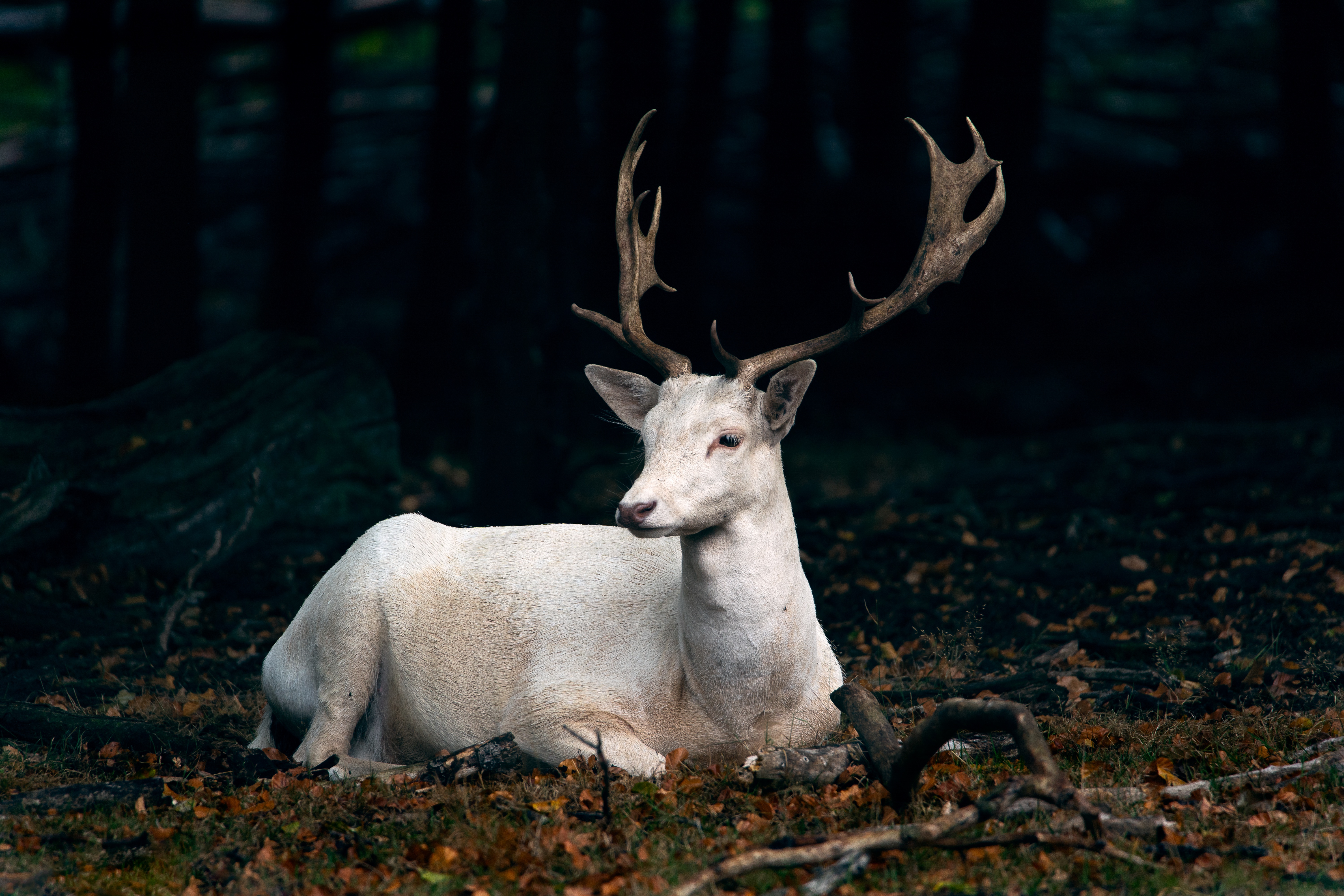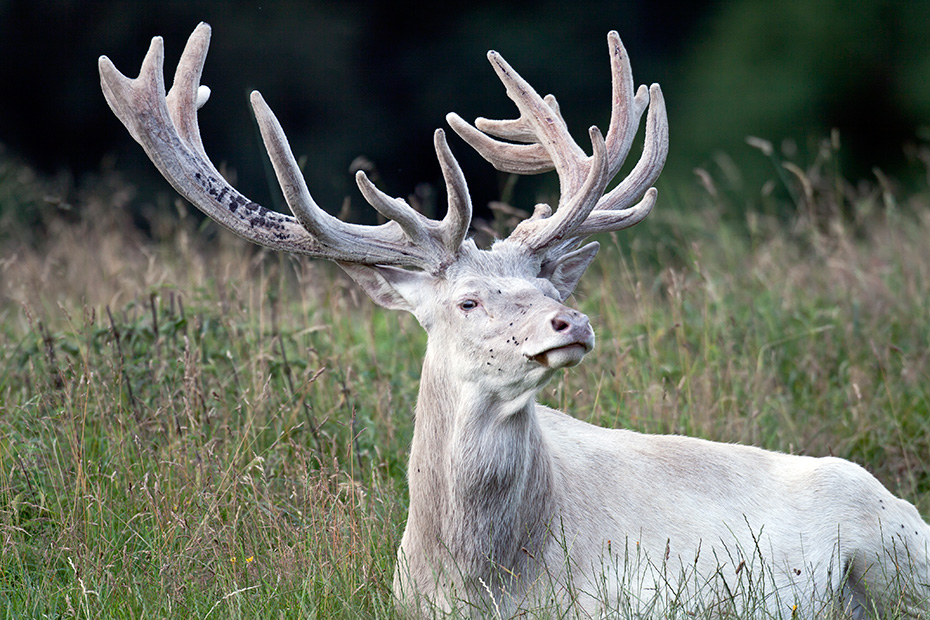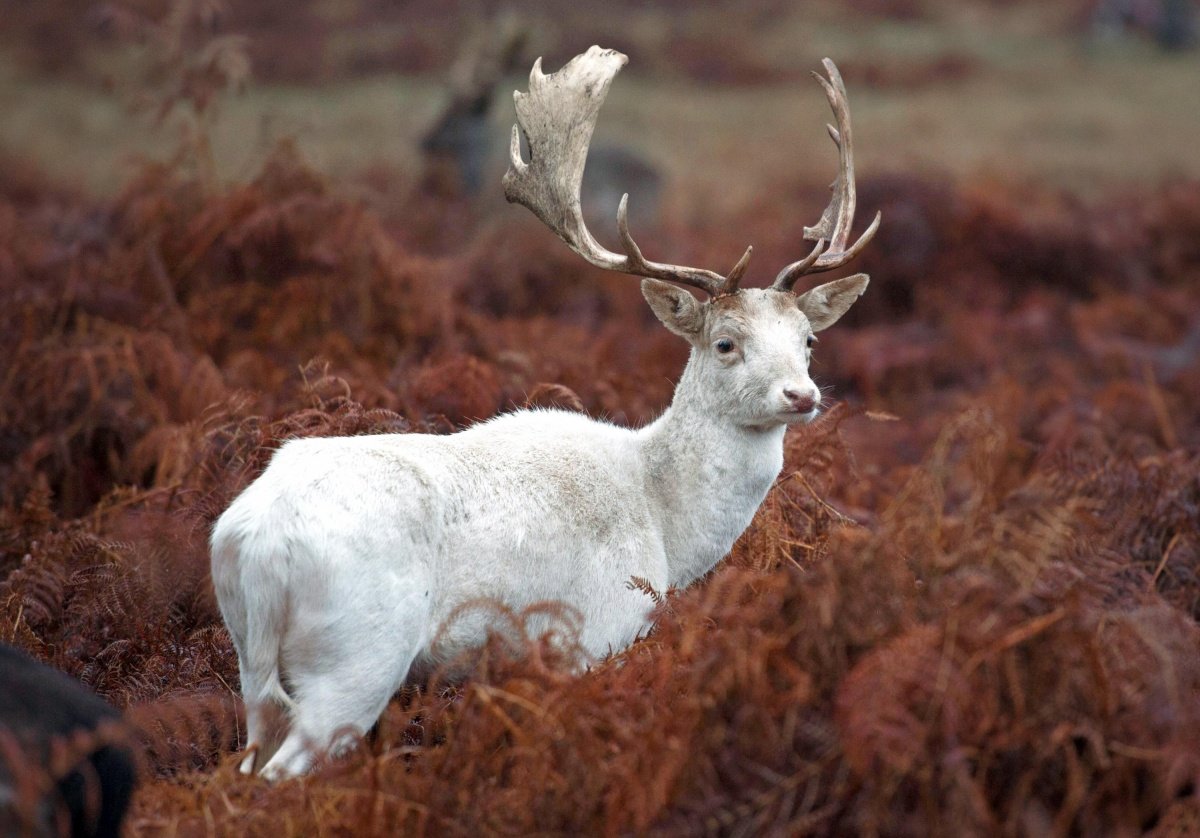In the heart of the world’s forests and meadows, amidst the usual shades of brown and tan, there exists a creature so rare and mesmerizing that its mere presence can leave one spellbound—the white deer. These ethereal animals, with their striking white coats and ghostly elegance, are not only a natural rarity but also a symbol of mystery, beauty, and spirituality. This article explores the allure of white deer, their significance in folklore, their biological uniqueness, and their presence in modern conservation efforts.

A Rare Phenomenon of Nature
White deer are a rare occurrence in the wild, and their unique appearance is due to a genetic mutation known as leucism, which results in a partial loss of pigmentation. Unlike albino animals, which lack pigment entirely, leucistic deer have dark eyes and normal skin pigmentation, distinguishing them from their albino counterparts. This condition gives them their characteristic white or cream-colored fur, setting them apart from their more commonly colored relatives.

Folklore and Symbolism
White deer have been a part of human mythology and folklore for centuries, often depicted as messengers of the divine or symbols of purity and otherworldly beauty. In Celtic mythology, the white stag is seen as a harbinger of significant events and a guide to the otherworld. The legend often involves a white stag leading hunters on a chase, only to disappear, leaving the hunters with a sense of awe and a deeper connection to the spiritual realm.
In Native American traditions, the white deer holds a place of reverence and is often considered a sacred animal. Its sighting is believed to bring messages from the spirit world and is seen as a sign of change and transformation. Similarly, in Japanese culture, the white deer is associated with the gods and is considered a sacred creature in Shinto beliefs.

The Challenge of Survival
While their beauty is undeniable, white deer face significant challenges in the wild. Their conspicuous coloration makes them more visible to predators and hunters, reducing their chances of survival. Additionally, they can be targets for poaching due to their rarity and perceived value.

Conservation and Protection
Recognizing the vulnerability of white deer, several conservation efforts are in place to protect these magnificent creatures. Wildlife reserves and sanctuaries provide safe habitats where white deer can live without the threat of hunting. Public awareness campaigns aim to educate communities about the importance of preserving these animals and respecting their role in the ecosystem
 .
.
Sightings and Public Fascination
The sighting of a white deer is a rare and magical experience, often leaving a lasting impression on those fortunate enough to witness it. Wildlife photographers and enthusiasts travel great distances in hopes of capturing a glimpse of these elusive creatures. Social media has played a significant role in sharing these encounters, spreading awe and appreciation for the natural world’s wonders.
Conclusion
The white deer stands as a symbol of nature’s wonder and the mystical beauty that lies within the natural world. Their rarity and ethereal appearance continue to inspire awe and reverence across cultures and generations. As we strive to protect and conserve these incredible animals, we are reminded of the delicate balance of our ecosystems and the profound connections we share with the creatures that inhabit our planet. The white deer, with its ghostly grace and timeless symbolism, remains a beacon of the extraordinary and a testament to the enchanting diversity of life on Earth.





